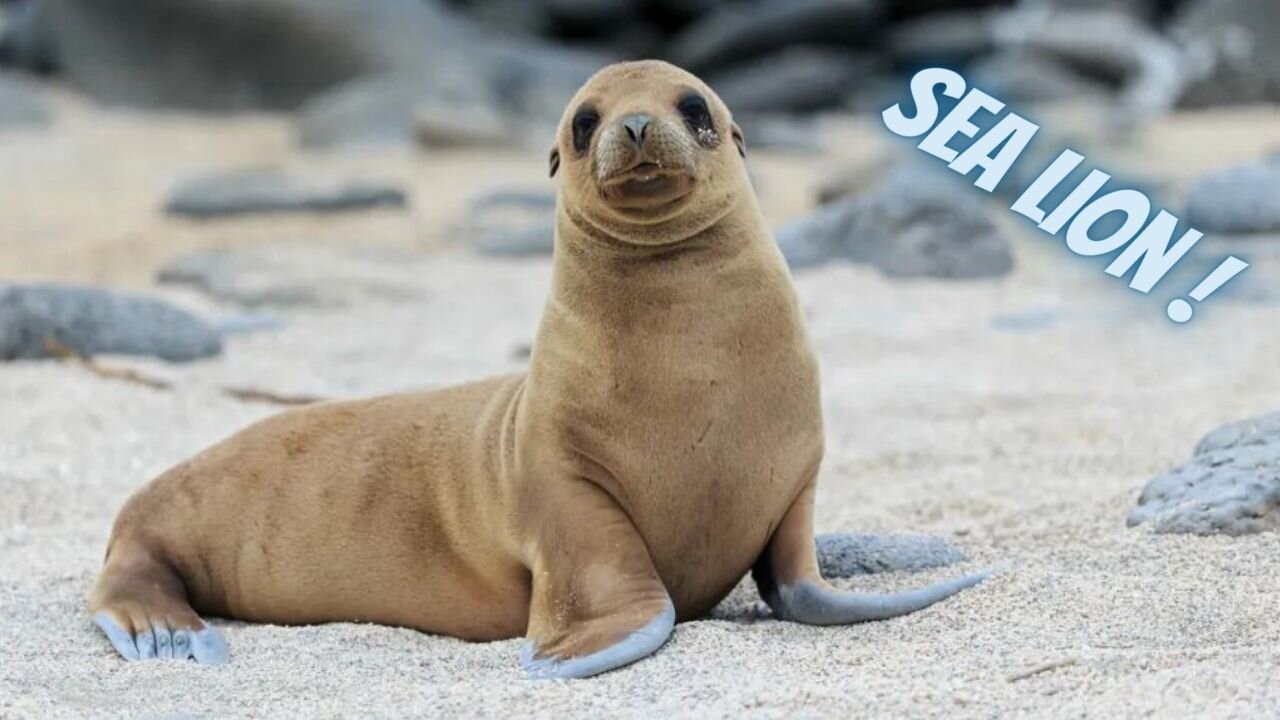Premium Only Content

All About Sea Lions for Kids- Sea Lion Facts and Information for Children
Sea lions are some of the most adorable creatures that you’ll find in the sea. In fact, their name may be a bit of a misnomer; sea puppy might be a better fit. Of course, this is purely an opinion. If you’re looking for some solid sea lion facts to answer questions such as ‘what is the difference between a seal and a sea lion‘ and ‘what do sea lions eat‘, then here are fourteen of them.1. They are mammals
That makes sense, considering the lion part of the name. They give birth to live pups, and the females produce milk to nurse their young – just like puppies!
2. There are many sea lion species
There are actually seven different species, even though they often seem to be bundled into the same category. Six species can be seen today, but one is sadly now extinct. They all belong to a group of animals called pinnipeds along with seals and walruses.3. The Northern Atlantic Ocean is off-limits
Where do sea lions live? Well, pretty much throughout the world, from Mexico to Australia – except for the Northern Atlantic Ocean. This is strange since its temperatures are certainly compatible with where these marine mammals typically live, and there’s plenty of food there. Scientists have no idea why they refuse to inhabit this area.4. Sea lions vs. seals
While both species belong to the pinniped order of marine mammals, the most noticeable difference is that seals can’t walk on land; instead, they bounce along – known as galumphing. Sea lions, however, can walk — even run — on all four flippers. Sea lions also have external ear flaps, which ‘true seals’ don’t have.5. Sea lions are skillful hunters
These carnivores enjoy a varied seafood diet of small prey, such as herring, anchovies, crabs, and squid. Sea lions spearfish using 34 to 38 sharp teeth, and sift through reefs using their whiskers. They swallow their meals whole, and can eat up to 40 pounds a day! In some cases, sea lions have been known to consume up to 8% of their own body weight in food per day.6. The bigger, the better
A male sea lion grows to be pretty big – much larger than females. The females look for the largest males to mate with, so in this case, yes, bigger is better.
7. Sea lions are very social
These playful creatures communicate in a variety of ways, although scientists are still somewhat baffled as to what their sounds mean. They travel in large colonies, which have subgroups. Some individuals will even move from subgroup to subgroup during their lifetimes – so in a way, they’re kind of like cliques.
-
 5:01
5:01
BIG NEM
12 hours agoInside the Albanian Mob... As a Serb.
25.7K2 -
 1:40:14
1:40:14
TheConnieBryanShow
4 days agoGAIN OF FUNCTION: MRNA, D.A.R.P.A. & THE PFIZER PAPERS
21.4K5 -
 2:14:01
2:14:01
Fresh and Fit
9 hours agoDr. Disrespect Moves To Rumble!
74.2K38 -
 6:14:53
6:14:53
Akademiks
11 hours agoDrake Sued his Label for Botting Kendrick Lamar Streams to 'End Him'. Kendrick Drops new video!
80K18 -
 0:46
0:46
Dr Disrespect
17 hours agoIt's not just a stream... it's an experience
348K1.79K -
 5:45:38
5:45:38
80sKiid
12 hours ago $30.33 earnedFirst stream on RUMBLE!!!!!
106K5 -
 3:56:31
3:56:31
JakeParker
12 hours ago $14.68 earnedJakeParker is LIVE on Rumble
62.8K -
 8:09:23
8:09:23
SpartakusLIVE
13 hours ago $27.52 earnedThe Duke rallies squad for LAUGHS into the night with a SMATTERING of TOXIC banter
95.3K17 -
 1:03:51
1:03:51
Flyover Conservatives
1 day agoGeneration Z’s Revolution: 17 Year Old Author on the Return of Faith, Family, and the End of Feminism - Hannah Faulkner; Economic Update - Dr. Kirk Elliott | FOC Show
55.6K2 -
 1:12:43
1:12:43
Adam Does Movies
16 hours ago $21.45 earnedMoviegoers Are Singing Now! + Lilo & Stitch + Sonic 3 - LIVE!
88.3K7